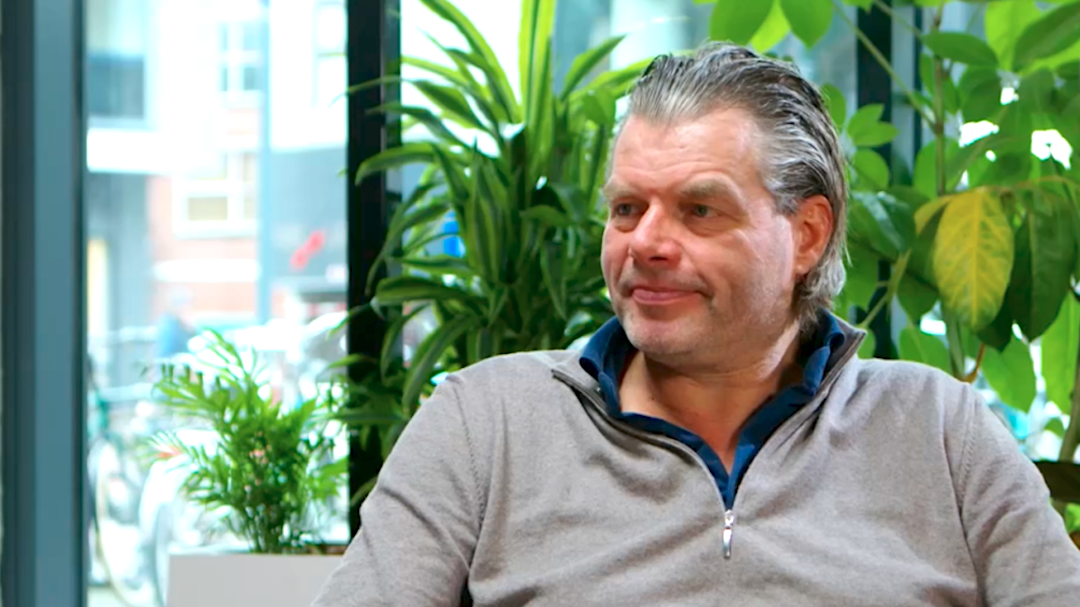The Dutch Chamber of Commerce (KVK) has changed in recent years from a traditional executive body with a large IT organization to an agile data company, where most of the IT people are part of the business. These changes show the hand of seasoned CIO Pieter Halenbeek, recently nominated for the CIO of the Year Award.
What is currently the most significant task facing your organization?
“Essential right now is our legacy program. We have a Trade Register that is forty years old. Over ten years ago, we built a new register, but the completion of that has come under pressure due to the daily demand for new functionalities, which often have to do with digitization. Hence, the old Trade Register is still ‘on’. When I came here in 2019, there was a critical report from the ICT Review Office; we had to finish the new system to turn off the old one. I have prioritized that in recent years; about 30 percent of our total capacity is spent on that. In 2024, we are going to turn off the old system.”
“The second task is security and continuity. If KVK is down for a day, like the other day with a DDoS attack, then planes are grounded because export documents are unavailable. We invest a lot in continuity and security and continuously seek improvement.”
“The next challenge is the Trade Register 2.0. Together with the ministry of EZK, a vision has been developed to seek a better balance between open data – necessary to do business safely and responsibly – and the need to shield sensitive data.”
What role do IT, data, and digitization play, and what is your angle on this as a leader?
“In 2019, there were 22 directors, of which one was the director of IT – me. I got chastised because IT never delivered. IT was an enabler for the business – they asked, and we obliged. In recent years, we have undergone an agile transformation in which business and IT have come together through a Spotify-inspired model. With us, IT has become the business’ IT.”
“I had a prominent role as a “quartermaster” in transforming an agile organizational structure. Four hundred of the 600 IT professionals are now with the business; 35 of the 50 IT teams are under the business directors, and the remaining 15 teams are for support and facilitation, such as workplace management, the Security Operations Center, and Platform Services.”
The importance of IT in the organization has grown tremendously. All customer processes are now digitized, except the collection of a Chamber of Commerce number by start-ups, where identification from our gatekeeper function is still required.”
“It’s incredibly fun to tell other organizations about working with customer journeys and value streams”
“We no longer see ourselves as a public administrative organization but as a data company. Data is everything for us. We have also positioned the CDO at the same level as the CIO because we consider them at least as important as the CIO.”
What are you proud of?
“I stood on stage at the Gartner Symposium in Barcelona last year and discussed our transformation. It’s also incredibly fun to tell other organizations about working with customer journeys and value streams. Organizations also visit us, and the highlight is usually a visit to our corporate and decentralized Obeyas, where all the initiatives and Epics in the organization are transparently visible, and I’m proud of that.”
“IT has become everyone’s. I am thrilled and proud of that, too.”
What challenges do you still face as a leader, and how will you try to solve them?
“We give product owners a lot of mandate and freedom. And when things don’t go the way you would like or have been agreed upon, we must not fall into the old thinking of controlling and reporting other than working with the Obeya. I sometimes find that a challenge as a leader.” But, of course, the same goes for me. I get a lot of freedom and responsibility from the Board of Directors, and sometimes things don’t go my way, but I always try to sound the alarm in a timely manner if something is not going to work.”
You hope to create a culture where you talk openly about successes but also about things that are not going well. I find that we still need to work on creating a safe culture. Structure and processes you put in place in six months, so to speak, but changing the culture takes more time.”
What is your motto? Do you have any tips for your peers?
“I always say: a little better every day – continuous improvement. I regularly look back a year and analyze the successes and learning points achieved. That, in turn, gives me confidence in the successes we can achieve in the coming year. So you can gain confidence in future successes through past results.”
“IT is often still somewhat tucked away in organizations. My advice is to make IT everybody’s. After all, the world is becoming digital.”


